Mechanism of dracorhodin in accelerating diabetic foot ulcer healing via the Nrf2 pathway, a network pharmacology, molecular docking and experimental validation
- PMID: 40216975
- PMCID: PMC11992152
- DOI: 10.1038/s41598-025-97831-5
Mechanism of dracorhodin in accelerating diabetic foot ulcer healing via the Nrf2 pathway, a network pharmacology, molecular docking and experimental validation
Abstract
Delayed wound healing in diabetic foot ulcer (DFU) is a major cause of amputations, with ferroptosis impeding recovery. Dracorhodin (DP), a flavonoid from Dragon's Blood, has shown anti-inflammatory and wound-healing properties, though its molecular mechanisms is unclear. This study investigates DP's role in DFU treatment through bioinformatics and experimental approaches. A rat model of DFU was created with a high-fat/high-glucose diet and streptozotocin (STZ) induction, and wound healing was monitored after applying varying DP doses. Histopathological analysis and ELISA assessed tissue changes, inflammatory markers, and growth factors. Network pharmacology and molecular docking were used to identify core targets and pathways, while human umbilical vein endothelial cells (HUVECs) were used for in vitro testing. The results demonstrated that DP accelerated wound healing in DFU rats in a dose-dependent manner by enhancing collagen synthesis, angiogenesis, and growth factor levels, while simultaneously reducing inflammation and ROS levels. Network pharmacology and molecular docking analyses identified the Nrf2-mediated ferroptosis pathway as a potential key mechanism underlying DP's therapeutic effects in DFU. In vitro experiments further revealed that DP improved cell viability and migration, while decreasing ROS and lipid peroxidation levels, effects attributed to Nrf2 pathway activation. These outcomes were significantly attenuated by the Nrf2 inhibitor ML385. In conclusion, DP promotes DFU healing via activation of the Nrf2 pathway and inhibition of ferroptosis.
Keywords: Diabetic foot ulcer; Dracorhodin; Ferroptosis; Nrf2 pathway.
© 2025. The Author(s).
Conflict of interest statement
Declarations. Competing interests: The authors declare no competing interests.
Figures
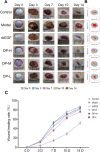
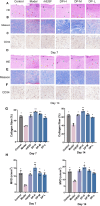
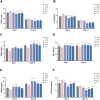
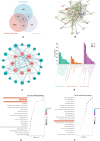

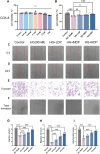
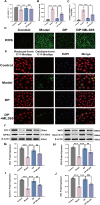

Similar articles
-
Paeoniflorin accelerates foot wound healing in diabetic rats though activating the Nrf2 pathway.Acta Histochem. 2020 Dec;122(8):151649. doi: 10.1016/j.acthis.2020.151649. Epub 2020 Nov 6. Acta Histochem. 2020. PMID: 33166863
-
Bone marrow stromal cell-derived exosomal circular RNA improves diabetic foot ulcer wound healing by activating the nuclear factor erythroid 2-related factor 2 pathway and inhibiting ferroptosis.Diabet Med. 2023 Jul;40(7):e15031. doi: 10.1111/dme.15031. Epub 2023 Apr 5. Diabet Med. 2023. PMID: 36537855
-
Study on the mechanism of activating SIRT1/Nrf2/p62 pathway to mediate autophagy-dependent ferroptosis to promote healing of diabetic foot ulcers.Naunyn Schmiedebergs Arch Pharmacol. 2025 Mar;398(3):3015-3025. doi: 10.1007/s00210-024-03400-4. Epub 2024 Sep 25. Naunyn Schmiedebergs Arch Pharmacol. 2025. PMID: 39320410
-
Combined metabolomics and network pharmacology to elucidate the mechanisms of Dracorhodin Perchlorate in treating diabetic foot ulcer rats.Front Pharmacol. 2022 Nov 18;13:1038656. doi: 10.3389/fphar.2022.1038656. eCollection 2022. Front Pharmacol. 2022. PMID: 36532755 Free PMC article.
-
Integrative approaches to network pharmacology studies in wound healing and bone fracture recovery: A comprehensive review.Biophys Chem. 2025 Sep;324:107458. doi: 10.1016/j.bpc.2025.107458. Epub 2025 May 16. Biophys Chem. 2025. PMID: 40450987 Review.
Cited by
-
Revealing the Multi-Target Mechanisms of Fespixon Cream in Diabetic Foot Ulcer Healing: Integrated Network Pharmacology, Molecular Docking, and Clinical RT-qPCR Validation.Curr Issues Mol Biol. 2025 Jun 25;47(7):485. doi: 10.3390/cimb47070485. Curr Issues Mol Biol. 2025. PMID: 40728954 Free PMC article.
-
Understanding risk factors and prognosis in diabetic foot ulcers.Open Life Sci. 2025 Aug 8;20(1):20251137. doi: 10.1515/biol-2025-1137. eCollection 2025. Open Life Sci. 2025. PMID: 40822975 Free PMC article. Review.
References
-
- International Diabetes Federation. The Diabetic Foot. Brussels, Belgium & Federation, I. D. https://www.idf.org/our-activities/care-prevention/diabetic-foot.html (Accessed 1 Aug 2022) (2020).
-
- Yadav, J. P. et al. Phytoconstituents as modulators of NF-κB signalling: investigating therapeutic potential for diabetic wound healing. Biomed. Pharmacother. 177, 117058 (2024). - PubMed
-
- Chen, L., Sun, S., Gao, Y. & Ran, X. Global mortality of diabetic foot ulcer: A systematic review and meta-analysis of observational studies. Diabetes Obes. Metab.25(1), 36–45 (2023). - PubMed
MeSH terms
Substances
LinkOut - more resources
Full Text Sources
Medical

